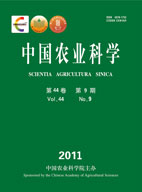-
Effects of Dietary Addition Pattern of Lysine, Methionine and Threonine in the Diet on Growth Performance, Nutrient Digestion and Metabolism, and Serum Biochemical Parameters in Calves at the Ages of 0-2 Months
- WANG Jian-hong, DIAO Qi-yu, XU Xian-cha, TU Yan, ZHANG Nai-feng, YUN Qiang
-
Scientia Agricultura Sinica. 2011, 44(9):
1898-1907.
doi:10.3864/j.issn.0578-1752.2011.09.017
-
 Abstract
(
438 )
Abstract
(
438 )
 PDF (675KB)
(
747
)
PDF (675KB)
(
747
)
 Save
Save
-
References |
Related Articles |
Metrics
【Objective】 This study was conducted to investigate the effect of dietary addition pattern of lysine (Lys), methionine (Met) and threonine (Thr) on growth performance, nutrient digestion and metabolism, and serum biochemical parameters in calves at the ages of 0-2 months. 【Method】 A partial deduction method was used to form different amino acid (AA) patterns from individual AA. Twenty-four calves were randomly assigned into 4 diet treatments: positive control (PC) and other 3 AA patterns from Lys, Met, Thr, respectively. In PC diet treatment, milk replacer was well balanced with Lys (2.34%), Met (0.72%) and Thr (1.80%); other 3 diets treatments were deducted from PC milk replacers with either Lys, Met or Thr at 30% (PC-Lys, PC-Met and PC-Thr), respectively. Blood were sampled at wk 0, 2, 4, 6, and 8 for measurement of serum metabolites. During wk 2-3 and wk 5-6, fecal and urine samples were collected for determination of the digestibility of nutrients and N retention. 【Result】 Both average daily gains (ADG) and feed efficiency (gain/feed, G/F) were improved significantly as age advanced (P<0.05). The average G/F was the highest in PC group (P<0.05). Based on N retention of calves, the limiting sequence of the 3 AAs were ranked as Lys, Met and Thr; the proper ratio was 100﹕29﹕70 for 2- to 3-wk-old and 100﹕30﹕60 for 5- to 6-wk-old calves. According to the ADG data for calves from 0 to 2 wk old, Lys was co-limiting with Met, Thr was the third-limiting AA, and the proper proportion of Lys﹕Met﹕Thr was 100﹕35﹕63. For the calves aged from 4 to 6 wk old, the limiting sequence of the 3 AAs was Lys, Met, Thr, and the proper ratio was 100﹕27﹕67. According to the data of G/F for calves from 0 to 2 wk old, Lys was co-limiting AA together with Met, Thr was the third-limiting AA, and the proper ratio was 100﹕26﹕56. For the calves aged from 4 to 6 wk old, the limiting sequence of 3 AAs were Lys, Met and Thr, and the proper ratio was 100﹕23﹕54. Both N retention and apparent digestibility of DM, OM and EE was higher in PC group than the other 3 groups. The serum concentrations of total protein and glucose were significantly affected by dietary treatments and ages (P<0.05), while the serum urea nitrogen remained relatively stable. 【Conclusion】 The limiting sequence and proper ratios of Lys, Met and Thr varied with different parameters, such as N retention, ADG or G/F and ages. The diet with relatively balanced Lys, Met and Thr can improve growth performance, and nutrient utilization in calves.









